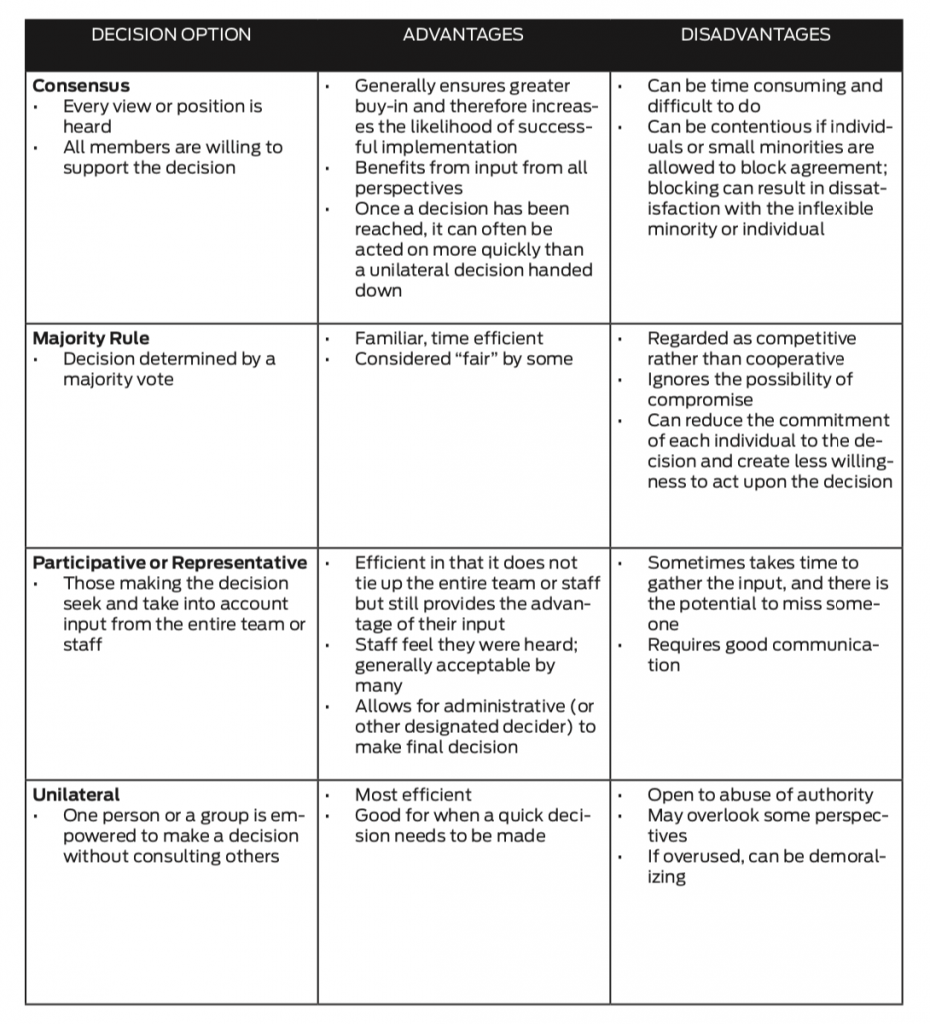IMPORTANCE AND OVERVIEW OF DECISION-MAKING PROCEDURES
As your work progresses, you will encounter regular decisions that need to be made by the team as well as larger decisions, made by the entire staff, regarding the development and implementation of new approaches. Without effective tools to make these decisions, you may get bogged down in indecision or prolonged discussions and even division.
UNPACKING DECISION-MAKING PROCEDURES
Who Decides?
There are some decisions where it just doesn’t make sense to involve everyone. Identifying an individual point person can be very appropriate when that person has much relevant knowledge or authority. Similarly, team decisions may also be appropriate when representation of the school is needed but involving the entire staff is impractical, unnecessary, or too time-consuming. However, you will want to take the time to involve the entire staff when the issue is one that everyone needs familiarity with or that requires the support of each person to carry out. This is essential when decisions are being made about new procedures or approaches to be implemented by all.
Common Approaches to Making Decisions

There are many consensus strategies that the SW-PBS Leadership Team can adopt to use with just the team, or with the entire staff.
For many decisions, consensus strategies will be sufficient to move forward. However, when, after much dialogue, a minority of staff, students, or families continues to object, leadership may need to move to “rough consensus” where the question about agreement is left to a person of authority. If rough consensus is used with a decision to move forward, the new approaches may be implemented on a trial basis with a scheduled review by all of how it is working at a designated later time.
When divisiveness is present, schools would be best to revisit mission, vision, guiding principles, or beliefs to foster harmony before moving on to make decisions using a consensus model.
Effective leaders understand the importance of striving for consensus but also understand that not all decisions should be made by the entire group or by using consensus strategies. In that case, a majority rule or unilateral decision will be made.
In addition, when the group is “stuck,” consensus may not be the most effective or efficient strategy. A smaller group can be assigned to bring suggestions back to all. This would be an example of participative or representative decision-making. Regardless of how decisions are made, clear communication with staff, students, and families is important to ensure all involved understand the process and their role or responsibilities for each decision.

